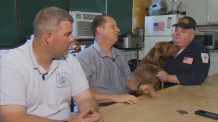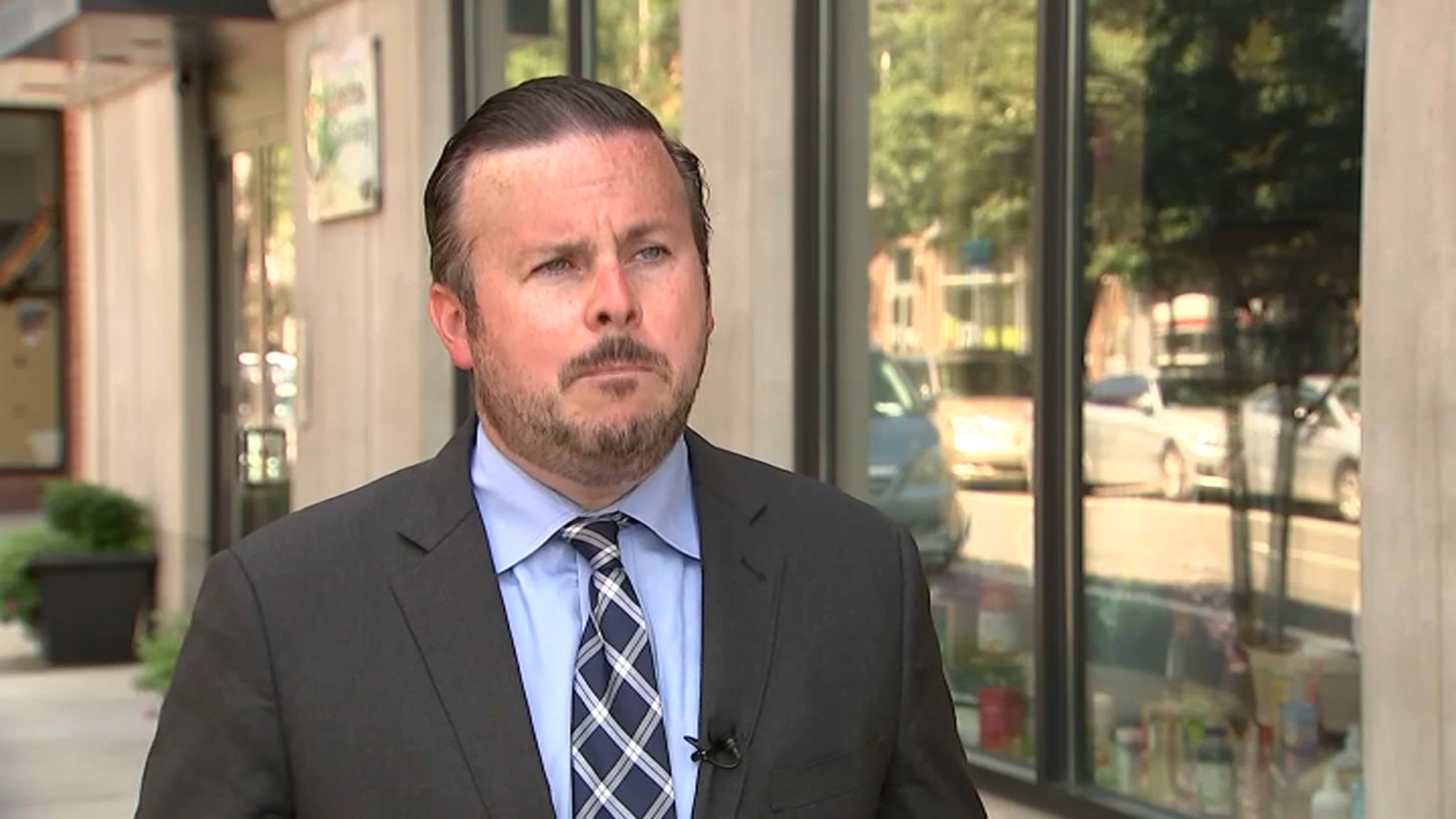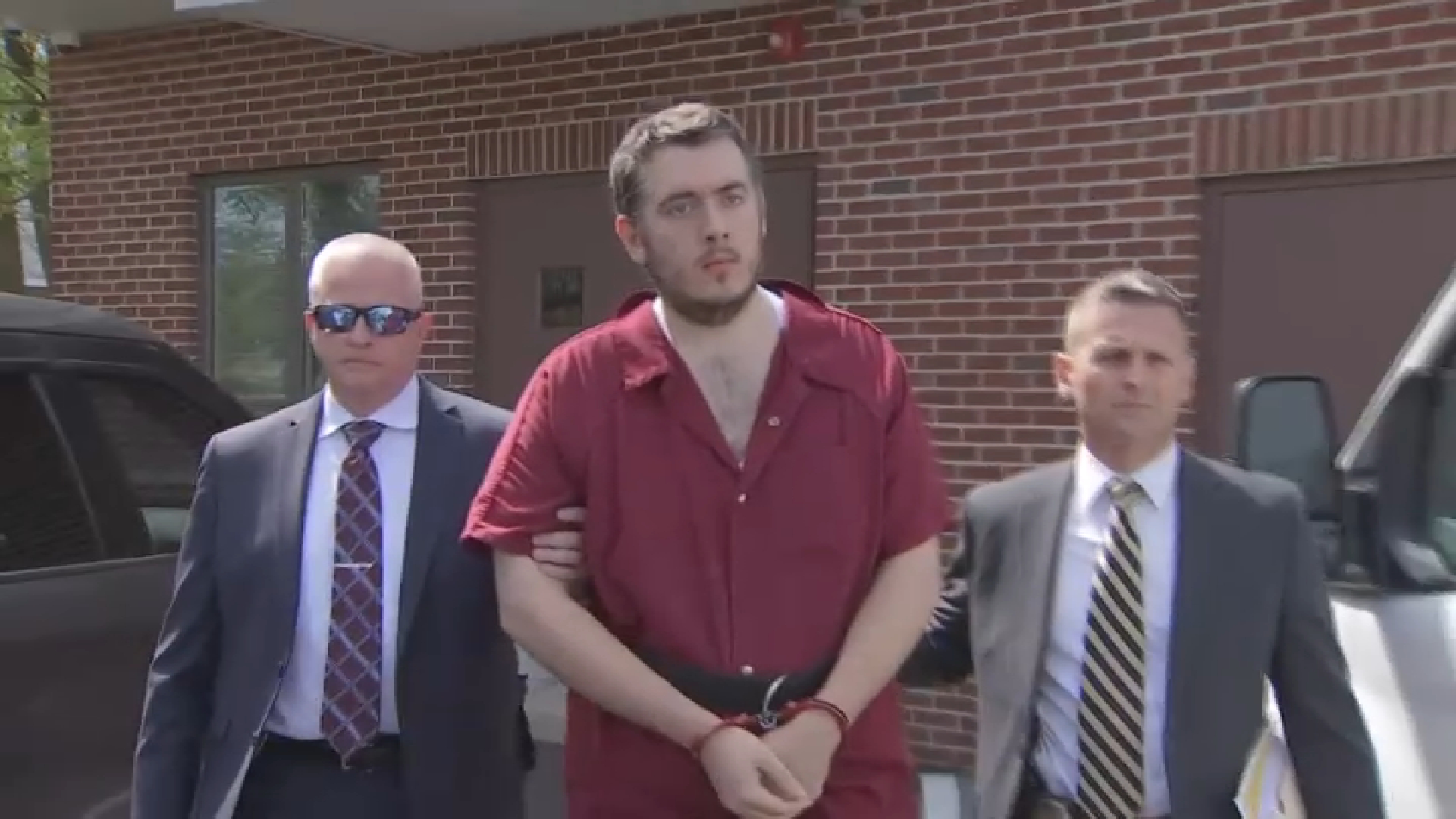If there is a typical morning for the firefighters of the Philadelphia Fire Department’s Rescue 1 D Platoon, June 5, 2013 was it. It was sunny and unseasonably warm for a not-quite-summer day, and the men had just wrapped up a call for an overturned tractor-trailer at the foot of the Ben Franklin Bridge.
That’s when everything changed.
Their radios crackled to life again.
A four-story building being demolished at 22nd and Market streets, looming over a busy corner in the heart of Center City, had crumbled, toppling onto a tiny, 20-by-60-foot Salvation Army thrift shop below. Parts of the roof and the walls were in the middle of the street. People were trapped inside.
“Once the reports started coming in a little bit more, we knew it was pretty much serious,” Rescue 1 Lt. Abraham Williams, a 14-year veteran, said Thursday as he joined fellow firefighters on the eve of the collapse’s second anniversary to reflect on that day.
“You hear the urgency in people’s voices over the radio,” Firefighter Henry Brolly, a solidly built 19-year veteran with a quick smile, recalled as he sat at a long wooden table with other members of Rescue 1 in the kitchen at Engine 43 Ladder 9, the firehouse on Market Street down the block from where the building fell. “I had no idea how big it was until we got there, but you knew it was something.”
The platoon put their heads together and made a quick plan of what equipment they’d need and how they’d approach the scene. Collectively, they had more than 60 years of experience — but that day was unlike anything they’d been through before.
“We were trained in structural collapse, but buildings aren’t dropping every day,” said Firefighter Michael Rauch, a 9-year veteran — the baby of the group, as his colleagues called him.

In all, that devastating collapse would cost six lives — those of Anne Bryan, 24, Roseline Conteh, 52, Borbor Davis, 68, Kimberly Finnegan, 35, Juanita Harmon, 75, and Mary Simpson, 24. Thirteen others would be seriously hurt, with one woman, Mariya Plekan, losing both her legs after being trapped under debris for 13 hours. A lawsuit filed in 2014 alleges that Danny C. Johnson, who was among the injured, died about three weeks later of complications related to his injuries.
“You never forget it. Never. It’s just burned into your memory,” Brolly said. “It was a beautiful day. I remember how nice it was.”
Local
Breaking news and the stories that matter to your neighborhood.
‘This is the Real Deal’
The abundant sunshine and crystal-blue skies of that morning provided a stark backdrop to the harrowing scene of devastation that met firefighters, medics, police officers and others who helped in the immediate aftermath of the collapse.
Two years later, the seasoned rescuers who pulled people — dead and alive — from the wreckage say they are still haunted by that day.
“Training and experience is obviously what you fall back onto, and helps with your decision-making process, but until you’ve been on an incident like this and you’re looking into a hole and seeing that person, deceased or alive, I don’t think anything can prepare somebody for that,” said Fire Lt. Ken Pagurek, a Philadelphia firefighter for 20 years assigned to the Federal Emergency Management Agency’s Pennsylvania Urban Search and Rescue Task Force One, a special-operations unit.

“I think everybody has one of those moments where you’re like, ‘This is it, this is the real deal, if we don’t do what we’re supposed to do, there’s a possibility that someone isn’t going to live to see tomorrow,'” Pagurek said.
Alongside dozens of other first responders, Pagurek and other task force members worked into the wee hours of the morning, meticulously combing the pile of bricks, wood, steel and concrete for any signs of a life to save.
Pagurek said it’s the victims who didn’t make it out alive that haunt him.
“I see the people that didn’t survive that we got out,” Pagurek said, nodding his head slowly, his voice tinged with sadness. “Those are the people that stick with me.”
In the earliest moments after the collapse, a scene of chaos and heroism unfolded, first responders who arrived in the first several minutes said.
“Right away, people started yelling. There were people on the sidewalk, there were people in the building, so our first response was to go into the mess,” SEPTA Transit Police Officer Patrick Smythe, a special-operations officer at the time who heard the call come out while he was patrolling about a mile away, at 2nd and Market streets. “There were people walking wounded, so to speak, so we kind of just helped them over the rubble out of harm’s way.”
Smythe, who’s been on the job for three decades, was among a handful of SEPTA and city police officers who arrived at the collapse with firefighters and medics before the cloud of thick, brownish-yellow dust had settled. Also with him were Transit Police Officers Michael Davies and Thomas Merceir. All three were working different jobs on the 6 a.m. to 2 p.m. shift that morning and happened to be within several blocks of the site.
“The only thing I can remember, really, is just trying to help people move debris to search for people,” Merceir, a 23-year veteran SEPTA K-9 officer who arrived within minutes, said. “Everybody was just passing debris down. Then once the Fire Department got there and came in with their equipment, we helped them and got out of the way.”.

A 13th-Hour Survivor
As morning wore into afternoon and the sun bore heavy over Market Street, police and the FBI tracked down cellphone numbers for the missing so rescuers could call in hopes for a ring to help them locate people down in the rubble. Later, police pinged phones to pinpoint some of those who were buried deepest.
For hours, FEMA Task Force One K-9 Search Specialist Tom Brown’s rescue dog, a chestnut-brown chocolate lab named Phoenix, searched the debris and barked repeatedly, nagging the rescuers that even though they’d already pulled several people from the wreckage, there was still someone alive, somewhere.
Phoenix, now 7, barked incessantly in the basement of the Salvation Army — but Rescue 1 members searched every corner and came up dry.
While Brown, a stout man with kind eyes who works on an as-needed basis for the FEMA task force, recalled the collapse this week with his fellow task-force members inside Engine 43, Phoenix stayed next to him, at times jumping up to playfully lick his cheek as he scratched her ears.
“A dog can indicate based on how air travels,” Pagurek said. “She was definitely indicating on something down there, so we were really confident we had a live victim in there.”
It was Mariya Plekan, now 54, a native of Ukraine and mother of two who’d been shopping at the Salvation Army at the time of the collapse. She survived 13 hours buried under pieces of the wall and the store’s roof that caved in, plus a layer of bricks that covered much of the site.

“I thought it was remarkable given the size of the building that fell onto the Salvation Army store that anybody survived because of the type of collapse and the amount of destruction we saw there,” said baby-faced Lt. Brian Booth, a 15-year veteran firefighter also on the FEMA task force.
Plekan is a survivor whose story has stayed with many of the firefighters who worked the collapse. In a tearful meeting on Friday afternoon, for the first time since the night she was rescued, she came face-to-face with Battalion Chief John O’Neill, who found her in the rubble 13 hours after the building fell. Plekan now lives at St. Ignatius Nursing & Rehab Center in West Philadelphia and has undergone multiple surgeries, including amputations of both of her legs.
Her attorney, Andy Stern, filed a lawsuit against several people involved with the collapse in August 2013 and is working to get her adult daughter and son, who still live in Ukraine, permanent visas for the United States. He said on Friday's meeting that he could not comment on any legal issues.
Tears poured down Plekan's cheeks behind her wire-framed glasses as she thanked an emotional O'Neill from her wheelchair.
Plekan, who is from Ukraine, spoke mostly through translations by her close friend, Dariya Tareb, but told O'Neill in English: "I want to thank you very much, and God bless you and your family."
Pulling Plekan out alive after more than half a day buried was little short of a miracle, but firefighters said working under the assumption that living people were still in the pile was what kept them going through hours of painstaking, heavy work.
“The way we look at it is everybody is a viable rescue. We don’t look at it as if it’s been eight hours,” Deputy Chief Craig Murphy, a tall, mustached special-operations commander with 28 years on the job, said. “Look what happened. It was [more than] eight hours, and we found somebody in there who was still alive. And that’s how we did the whole search.”
Murphy and Deputy Chief Joseph McGraw, who commanded operations at the collapse site, both said the work of the firefighters, police officers, EMTs and civilians who helped by sending food and supplies to the workers at the scene was an incredible effort, but both said they sometimes still wonder what could have been done better.
“I’m disappointed that we weren’t able to find her earlier,” McGraw, who plans to retire in the next few months after 38 years in the Fire Department, said of Plekan. “We must’ve walked over the spot that she was in a thousand times, but nobody knew she was there … That kind of stuff plays on you. When you go home, you think about that.
“I’ve been around enough to know you can only do what you can do,” McGraw continued. “But you say to yourself why couldn’t I just have been super-chief that day and say, ‘Hey, dig there, guys.’ But that ain’t life. That’s not reality.”

Hope through the Horror
Since the collapse, in addition to Plekan’s suit, several other lawsuits have been filed by families of victims. A consolidated wrongful-death suit filed more than a year after the collapse against contractor Griffin Campbell, construction worker Sean Benschop, property owner Richard Basciano, the Salvation Army and other involved entities contends that a seventh person also died as a result of injuries he suffered in the collapse. The lawsuits are pending.
Benschop, 44, who police have said was under the influence of drugs while he operated an excavator at the site the day of the collapse, and Campbell, 51, who hired Benschop and oversaw the demolition, have been criminally charged with third-degree murder and related offenses. Both face trial set to begin in September, and a gag order has been issued in the case.
On Friday morning, a ceremony at the collapse site with remarks by Mayor Nutter, Nancy Winkler — the city treasurer whose daughter was killed that day — and others marked the two-year anniversary. The Philadelphia Art Commission earlier in the week approved a design for the June 5th Memorial for a park that is to be built on the site. The memorial will feature three granite stones with two windows in each — one for each victim.
Deadly Building Collapse in Pictures: 4 Years Later
The anniversary brings back the memories of that day for Murphy. “The biggest thing for me was when they established the park and they brought everybody back last year … that kind of brought everything back,” the fire chief said.
The collapse’s devastation, police and firefighters alike recalled, was matched only by the kindheartedness and hope they found in each other and in citizens who did anything they could to help.
Civilians who witnessed the collapse sprang into action before police and firefighters arrived, disregarding their own safety to help people who were hurt. Restaurant workers from the eateries along Chestnut Street brought food and water for rescue workers. An excavator operator from a nearby construction site commandeered to help clear some of the heaviest debris in the search for victims followed fire commanders’ directions with a patient and gentle touch.
Soft-spoken firefighter Edward Brown, a member of Rescue 1, held a trapped woman’s hand through a small opening in debris for hours until Rescue 1 members were able to free her. He soothed the woman — “I just told her, ‘You’re gonna get out of here,’” he recalled — promising that everything would be OK, that he wouldn’t leave her until she made it out.
“It never ceases to amaze me how good-hearted people are, from the inside,” Murphy said. “Because everybody wanted to support us the day we were out there.”
McGraw said for him, seeing the faces of the men who were on the front lines that day still brings everything back.
“When I saw Eddie Brown today, I said to myself, ‘There’s one good man. I’m glad I had to be his boss.’ I look at Craig [Murphy] and say the same thing,” McGraw said. “People you know that when it’s down and dirty time, you can count on them, and that’s what I admire. That’s what keeps me going.”
Contact Morgan Zalot at 610.668.5574, morgan.zalot@nbcuni.com or follow @MorganZalot on Twitter.



